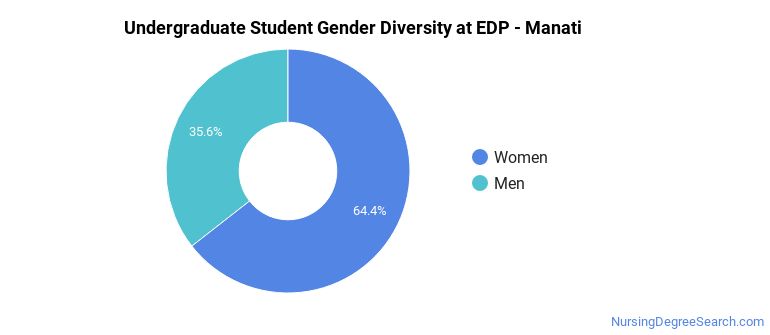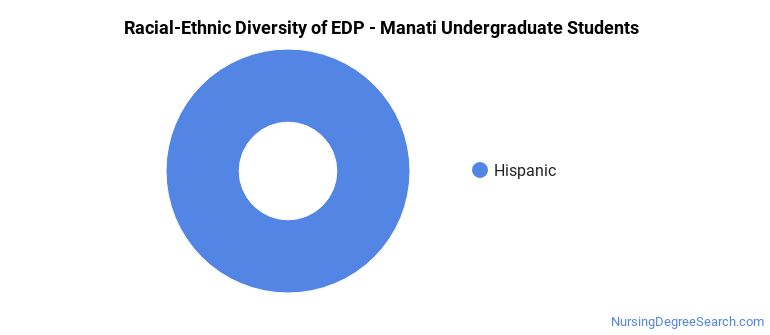EDP University - Manati Nursing Programs
EDP University - Manati is a private not-for-profit institution situated in Manati, Puerto Rico. Manati is a good match for students who enjoy the safety and convenience of the suburbs.
Where Is EDP University - Manati?

Contact details for EDP - Manati are given below.
| Contact Details | |
|---|---|
| Address: | Mckinley Street #52, Manati, PR 00674-0000 |
| Phone: | 787-621-3652 |
| Website: | www.edpuniversity.edu |
Admission Requirements for EDP - Manati
| Submission | Required? |
|---|---|
| High School GPA | 1 |
| High School Rank | 3 |
| High School Transcript | 1 |
| College Prep Program | 3 |
| Recommendations | 3 |
| SAT or ACT Scores | 3 |
| TOEFL | 3 |
How Hard Is It To Get Into EDP - Manati?
Approximately 29% of accepted students are men and 71% are women. The acceptance rate for men is 57%, and the acceptance rate for women is 96%.
Can I Afford EDP University - Manati?
Student Loan Debt
Almost 66% of college students who graduated with the class of 2018 took out student loans, but that percentage varies from school to school. At EDP - Manati, approximately 23% of students took out student loans averaging $9,401 a year. That adds up to $37,604 over four years for those students.
EDP University - Manati Undergraduate Student Diversity

Gender Diversity
Of the 135 full-time undergraduates at EDP - Manati, 36% are male and 64% are female.

Racial-Ethnic Diversity
The racial-ethnic breakdown of EDP University - Manati students is as follows.

| Race/Ethnicity | Number of Grads |
|---|---|
| Asian | 0 |
| Black or African American | 0 |
| Hispanic or Latino | 135 |
| White | 0 |
| International Students | 0 |
| Other Races/Ethnicities | 0 |
EDP University - Manati Nursing Concentrations
The table below shows the number of awards for each concentration.
| Major | Associate’s | Bachelor’s | TOTAL |
|---|---|---|---|
| Nursing Science | 187 | 4 | 191 |
| TOTAL | 187 | 4 | 191 |
References
*The racial-ethnic minorities count is calculated by taking the total number of students and subtracting white students, international students, and students whose race/ethnicity was unknown. This number is then divided by the total number of students at the school to obtain the racial-ethnic minorities percentage.
More about our data sources and methodologies.
